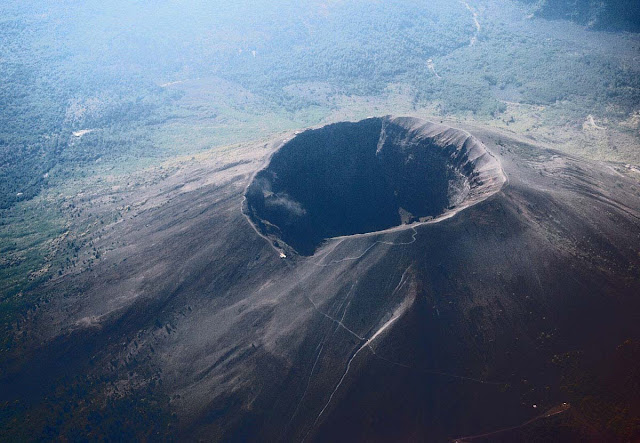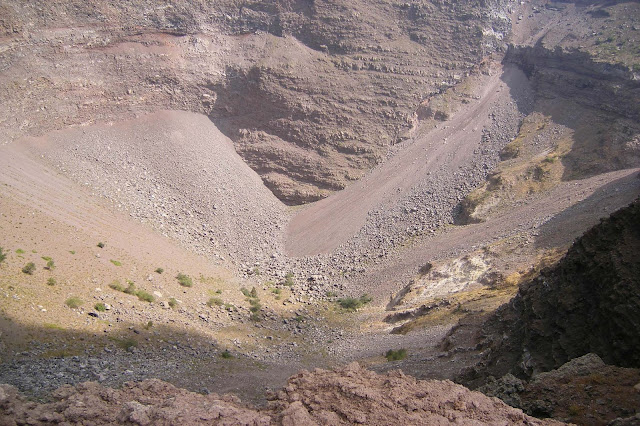Mount Vesuvius is a stratovolcano on the Bay of Naples, Italy, about 9 kilometres (5.6 mi) east of Naples and a short distance from the shore. It is the only volcano on the European mainland to have erupted within the last hundred years, although it is not currently erupting. The two other major active volcanoes in Italy, Etna and Stromboli, are located on island of Sicily.
Mount Vesuvius is best known for its eruption in AD 79 that led to the burying and destruction of the Roman cities of Pompeii and Herculaneum. They were never rebuilt, although surviving townspeople and probably looters did undertake extensive salvage work after the destructions. The towns' locations were eventually forgotten until their accidental rediscovery in the 18th century.
The eruption also changed the course of the Sarno River and raised the sea beach, so that Pompeii was now neither on the river nor adjacent to the coast. Vesuvius itself underwent major changes – its slopes were denuded of vegetation and its summit changed considerably due to the force of the eruption. Vesuvius has erupted many times since and is today regarded as one of the most dangerous volcanoes in the world because of the population of 3,000,000 people living nearby and its tendency towards explosive (Plinian) eruptions. It is the most densely populated volcanic region in the world.
Text source:- Wikipedia. Images are copyrighted by their owners. Found any copyright issue, contact the administrator immediately. Report it now!
You have read this article Europe /
Italy /
Monuments /
Volcano
with the title Mount Vesuvius. You can bookmark this page URL https://tiffanyeatworld.blogspot.com/2012/03/mount-vesuvius.html?m=0. Thanks!


















